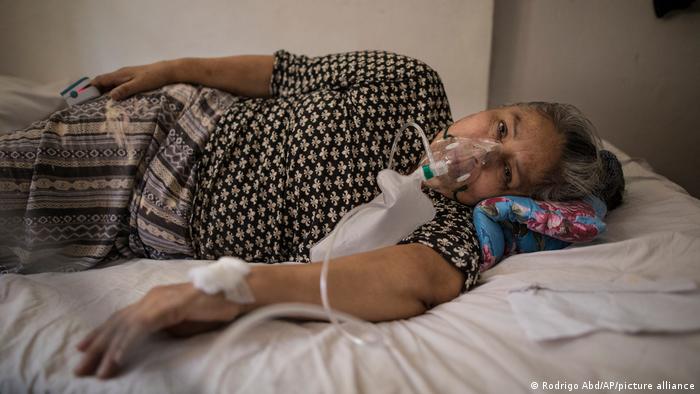
Lima: Classified as a "variant of interest" by the World Health Organization (WHO) on June 17, the lambda, or C.37, variant of the coronavirus has already been detected in some US states and at least 29 nations — many of them in Latin America.
In Peru, where it was identified in August 2020, the lambda variant accounted for more than 80% of new infections in June, and it is also spreading rapidly in Chile, Argentina, Brazil, Colombia, Ecuador and Mexico.
"So far we have seen no indication that the lambda variant is more aggressive," WHO virologist Jairo Mendez-Rico told DW. "It is possible that it may exhibit higher infection rates, but we don't yet have enough reliable data to compare it to gamma or delta."
Alpha (B.1.1.7), beta (B.1.351) delta (B.1.617.2) and gamma (P.1) are also categorized as "variants of concern" by the WHO. The classification indicates that they are more transmissible and more difficult to treat and can lead to more serious illness.
"Although it is possible, currently there is no indication that variants are more dangerous and lead to increased mortality," said Mendez-Rico. "It is likely that SARS-CoV-2 will become more transmissible throughout the course of its evolution but not necessarily more damaging."
Many scientists believe that the coronavirus pandemic won't be over until at least 80% of the world's population has been vaccinated. Variants like lambda could continue to emerge until that is achieved.
Mendez-Rico said inoculation presented the most effective defense. "All of the vaccines we have approved worldwide have been generally effective against circulating coronavirus variants, and there is no reason to suspect them to be less so against lambda," he said.
The virologist Pablo Tsukayama and his team at Lima's Cayetano Heredia University have traced the evolution of the lambda variant in Peru for months after identifying it through genome testing. Lambda spread more quickly than variants deemed far more dangerous by the WHO out of the way, even prevailing over the gamma variant, which had run rampant in neighboring Brazil.